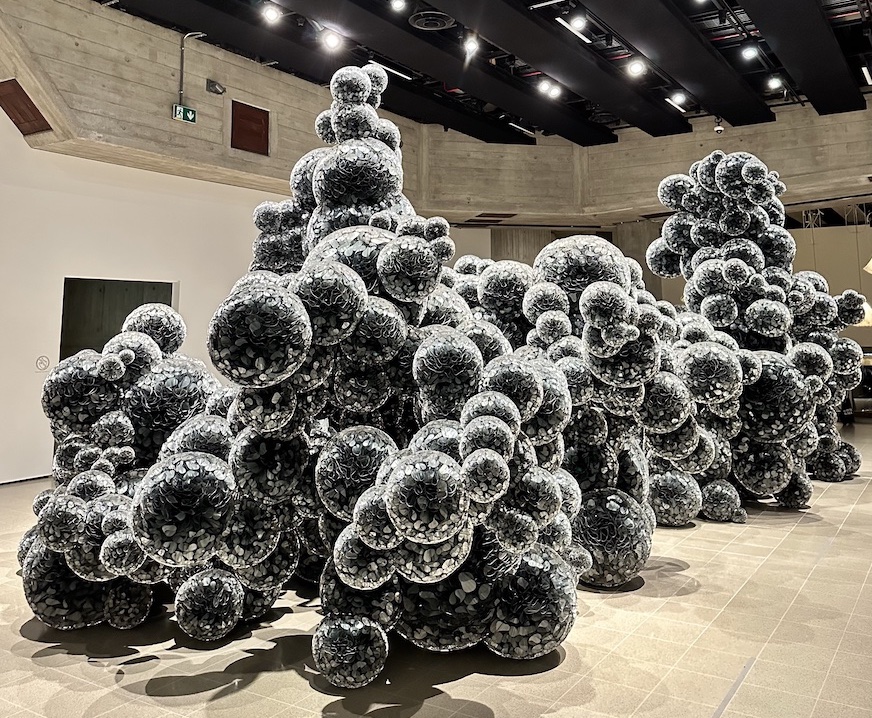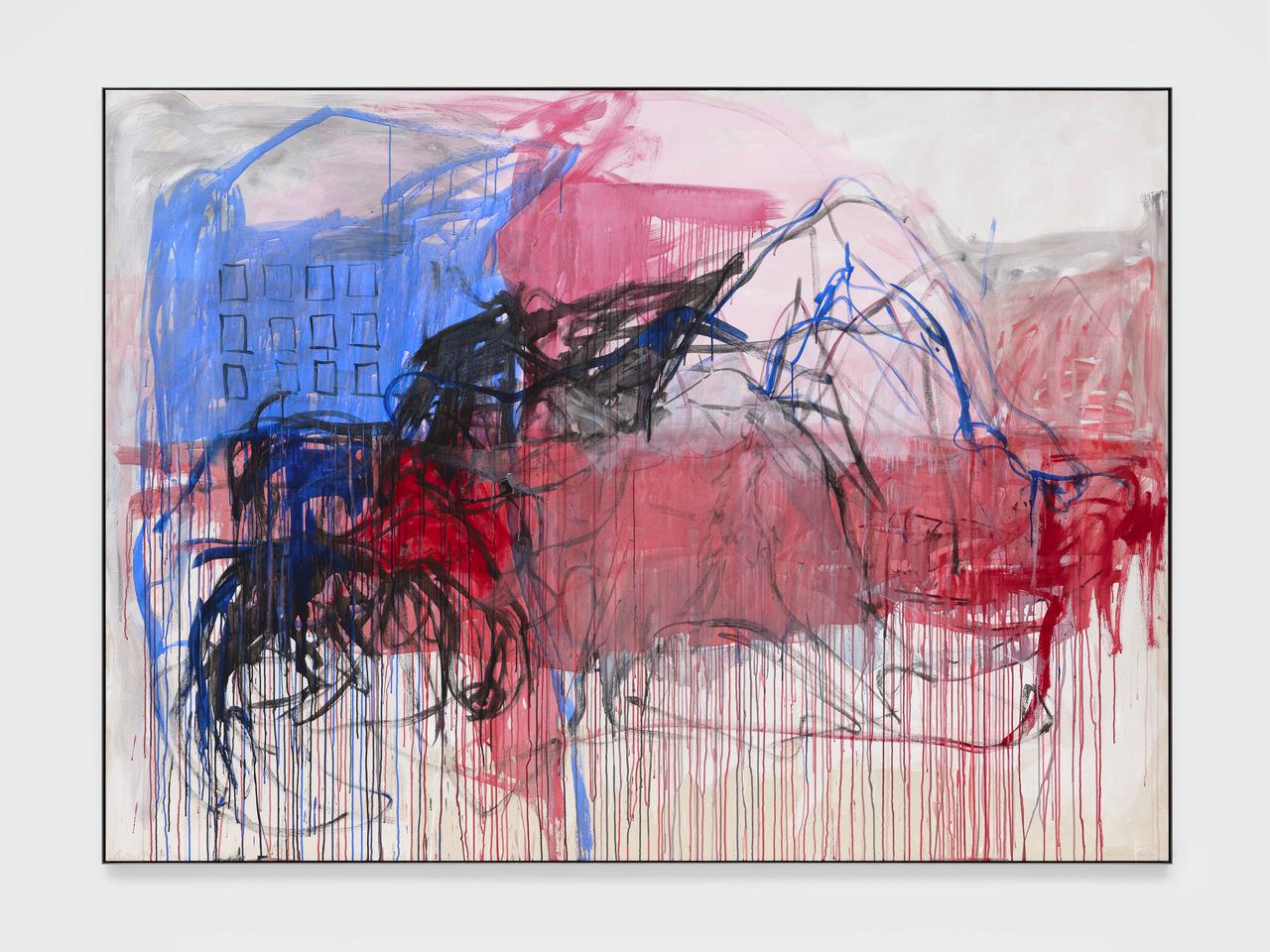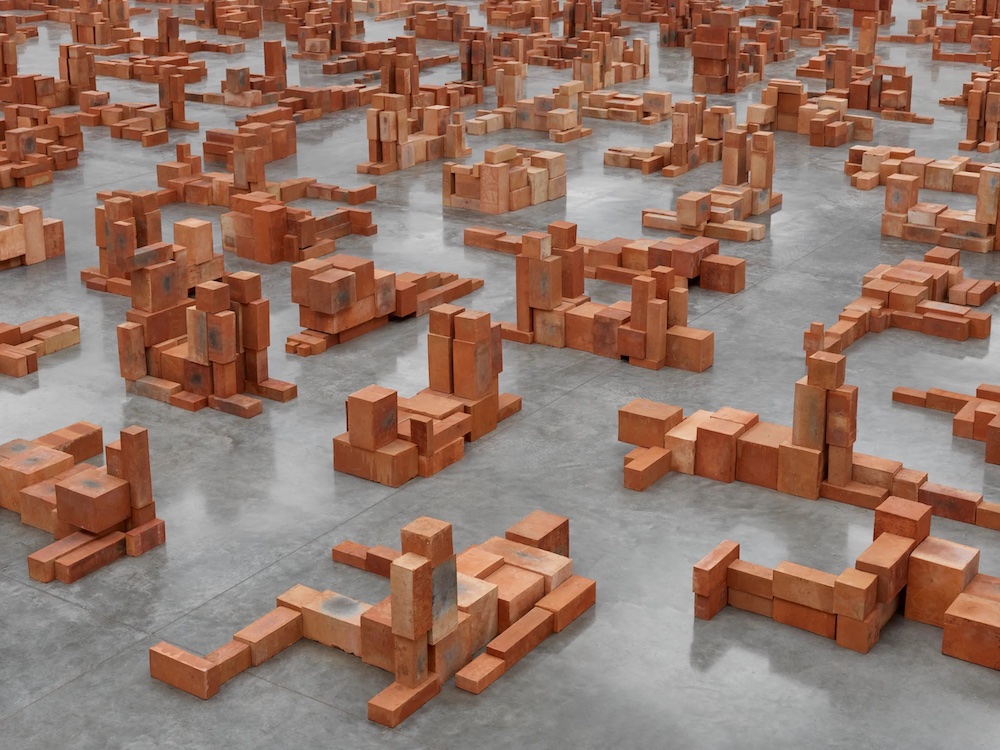London based painter James White creates stark, monochrome paintings depicting banal detritus of everyday life. His current exhibition, “Black Mirror” (on view at Sean Kelly Gallery through March 23), is comprised of a series of meditative paintings taken from photographs of White’s immediate surroundings. The haunting absence of human figures hints at a narrative well beyond the frame, infusing the seemingly mundane with dramatic effect.
On a grey London day most befitting of White’s colorless palette, we spoke to him about these new works, the trouble with shock art, and those infamous YBA days.
WHITEWALL: Your exhibition, ‘The Black Mirror,’ is currently on view at Sean Kelly Gallery. Could you talk about the new works?
JW: The new show is the latest incarnation of a group of paintings that I’ve been working on for about 10 years. Each time I make new works there are very slight incremental changes and this time there’s a stronger cinematic feel, with the psychological element more amplified than in previous paintings. I think there is a more open architecture to them than before, a lot of the paintings, like The Ladder, bring you in and then push you away.
WW: The titles of the paintings sound cinematic.
JW: With this new body of work the idea of the psychological is important. I’ve talked about the paintings in terms of Hitchcock. In a Hitchcock movie, he allows a scene to play for longer than is comfortable creating a strong sense of ambient dread. There’s that same awkward feeling to these paintings.
The exhibition title, “The Black Mirror,” refers to the painting of the same name in the show. However, black mirrors were also tools used by late 18th century British landscape painters as a pre-photographic device. They used a convex mirror with a blacked out back to look at the landscape, simplifying the tonal range and abstracting to create a painterly image. They weren’t looking at the landscape they were looking at a reflection of reality. I like that association with the show’s title.
WW: Going back to the narrative. When I look at the paintings the scenes hang in limbo. It’s almost like a freeze frame.
JW: I’m glad you see that because that’s definitely one of my intentions. I’m very interested in the paintings as film stills. They are cutaway shots, taking you out of the action. This is one of the main reasons that I want the paintings to look unremarkable. I often talk about the work in terms of what’s outside of the painting being important. They need to insinuate, imply, and be outside of something that is essentially far more interesting.
The paintings have progressed very slowly so each one becomes a historical document in some way. They are like pieces of a jigsaw on a long timeline, very methodical in their execution.
WW: You said you often paint things that are seemingly unremarkable. How do you choose those objects or scenes?
JW: They’re not constructed in any way. I think in order for the images to resonate it has to be as though you’ve come across them by chance. It implies that they could be a piece of evidence, which tends to be quite banal generally. However, the accidental quality also provides a voyeuristic element to the paintings. If I had intentionally constructed these scenes they would be very photorealist, purely based around technique. Photorealism is something I’m completely uninterested in.
WW: Do you think it provides a glimpse into a human intimacy?
JW: I don’t think that it’s a human intimacy. There is an intimacy there but it is with the objects and what they mean to you. In a way, there is almost an anti-human intimacy to them, a feeling of isolation and detachment. I want the images to have an atmosphere to them, a feeling of dislocation, because today everything is so fast, so quick. I want to step out of that and make these paintings very quiet and contemplative.
WW: They look forensic at times.
JW: Yes and I’m very interested in that. Mike Mandel and Larry Sultan made an amazing book called Evidence where they used found photographs from archives and presented them in an artistic context. It’s a very important book for me and I think my paintings function in a similar way. The evidential nature to my work is really important.
WW: Dotted through your paintings are brands like PG Tips or a can of Heineken. Are those conscious cultural references?
JW: I don’t do it deliberately but there are branded objects appearing within everyday environments all the time, so I don’t remove them. The objects are time signatures, you could look at them in 100 years and pin point the year through referencing those products.
WW: But it’s not so much a pop cultural sensibility?
JW: I don’t think so. However, I do feel closer to Pop, and the legacy of Pop, than I do to Photorealism. The way the paintings in the show stop before the edge of the picture plane reveals a substrate. It’s like film moving through a gate, which is a reference to the Ed Ruscha painting The End. Of course, Pop and Photorealism are very closely linked; both were a reaction to abstract expressionism and minimalism. I definitely feel my work comes out of that.
WW: You are often described as a Photorealist painter though. Does that annoy you?
JW: It does annoy me. It’s ridiculous; it shouldn’t annoy me (laughs). I can understand why people do it though, especially people outside of the art world, as it’s easy to bracket things in that way.
I think the reason why the work has ended up looking rather photographic is because the primary objective was to make them as style-less as possible. If I want to make a painting that represents a scene or an object, there has to be no artistic flourish, no style attached it.
I don’t want emotion attached to the way a brushstroke appears or a drip of color. There’s no color in the paintings for that reason. Color can become a distraction, and I did not want my paintings to be talked about in decorative terms.
WW: Do you feel that with so much shock art in the market that your way of working sets you aside from a lot of your peers?
JW: I think that’s definitely true now when you walk round an art fair and you’re bombarded with glitter, lights, and flashing. Art fairs are incredibly revealing as far as the way things are going within the art world. There is a lot of work being made for oligarchs’ dining rooms and from a curatorial level there is a certain type of work being made that panders to a curatorial fashion. I don’t want to be involved in that.
I’m deliberately outside of that world. My work is totally aware of its position, however I think it’s important not to fit into any trendy criteria. If I suddenly found myself in every group show going I would be worried – if your trendy one minute, then you’re unfashionable the next. The artists I admire have always avoided that.
WW: Speaking of trendy group shows, when you first graduated you were showing with the Chapman brothers and Sam Taylor Wood. What was that whole YBA era like?
JW: It was a really exciting because everybody did things for themselves. We put on our own shows and it became a template for what was to come. At that time people were coming out of college and the infrastructure within London’s art world just wasn’t there, so you had to do everything yourself. Damien (Hirst) organized “Freeze,” and Carl Freedman and Billy Sellman did the big Building One shows. For my exhibition with Sam [Taylor Wood], Jake and Dinos [Chapman] we put it on and produced the catalogue ourselves.
Everybody was so young that they didn’t have the inhibitions they have now. They weren’t so guarded or strategic. However, it got to a point with “Sensation” and so on that it became quite uncomfortable. I think that it was a moment and it had its place, but I very much wanted to get away from it.
WW: Because you didn’t want to be defined by an era?
JW: And to be more honest, you know? I’m not saying it was dishonest, but you looked at some of the work and you didn’t make any kind of connection with individual artists. You spoke about shock art and there was a lot of that.
There’s always a romanticism attached to that time. I think the most important thing about it was not the work but what it enabled further generations of artists to do. The work itself doesn’t always stand up, but the legacy of the YBA phenomenon is the most important part of how London developed the art scene it has now and what galleries are here. It wouldn’t have happened otherwise and London would be just the same as it was in 1989.
James White received his BA from the Wimbledon School of Art in 1989 and his MA from the Royal College of Art in 1991. Recent solo exhibitions include James White: New Paintings, The Goss-Michael Foundation, Dallas. Group exhibitions include The Adventure of Reality: International Realism, Kunsthal, Rotterdam, The Netherlands; Go for It! Art from the Olbricht Collection, Weserburg Museum of Modern Art, Bremen; and All Tomorrows Pictures, Institute of Contemporary Art (ICA), London. White was a John Moores 24 prizewinner in 2008 and the subject of a major monograph, James White: Paintings, with essays by Martin Herbert and Jeremy Millar, published in 2011 by FUEL.










